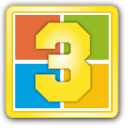Newsletter Archives
-
Saying no to patches

ISSUE 22.03 • 2025-01-20 PATCH WATCH

By Susan Bradley
Both Apple and Microsoft are providing updates and options that are unnecessary.
The good news for you Apple users is that the company is not taking a page out of Microsoft’s forced-change model and instead is letting us easily opt out of AI features. Clearly, it learned from its 2014 blunder — forcing the U2 album Songs of Innocence to iTunes on all iPhones.
When you receive a pop-up on your Apple device that supports Apple Intelligence, you get a “Not now” option that allows you to easily dismiss the request. For now, Apple’s AI is still somewhat limited and covers only writing, email, and Siri. More AI capabilities are to come later, but it’s good to see that we can easily opt out.
Read the full story in our Plus Newsletter (22.03.0, 2025-01-20).
This story also appears in our public Newsletter. -
MS-DEFCON 3: Secure Boot triggers recovery keys

ISSUE 21.31.1 • 2024-07-31 
By Susan Bradley
It’s time to check whether your boot drive is encrypted.
As I predicted, Microsoft’s July 2024 security update may trigger a request for recovery keys among those who enabled BitLocker or drive encryption. That’s because the update included a change to Secure Boot.
This is problematic enough that I’m lowering the MS-DEFCON level to just 3, rather than the more common level 4 I usually suggest at the end of the month. I think you should install updates, but don’t install and then review. Instead, understand this problem ahead of time, prepare as needed, and then update.
Anyone can read the full MS-DEFCON Alert (21.31.1, 2024-07-31.
-
Taming BitLocker and other encryption methods
ON SECURITY

By Susan Bradley
Our audience consists of several different segments. As a result, there are many different risk levels.
My risk tolerance may not be the same as yours, and vice versa. Ultimately, it comes down to your specific comfort level in your specific environment. And, of course, risk levels change over time.
Once upon a time, we would authenticate to our mail providers in plain text, with usernames and passwords clearly visible, and send all emails in the same fashion. You could “tap” the line with special equipment read every email – in the clear. That’s no longer considered secure, so now nearly all mail providers offer some sort of protection, especially for the credentials.
Read the full story in our Plus Newsletter (21.06.0, 2024-02-05).


